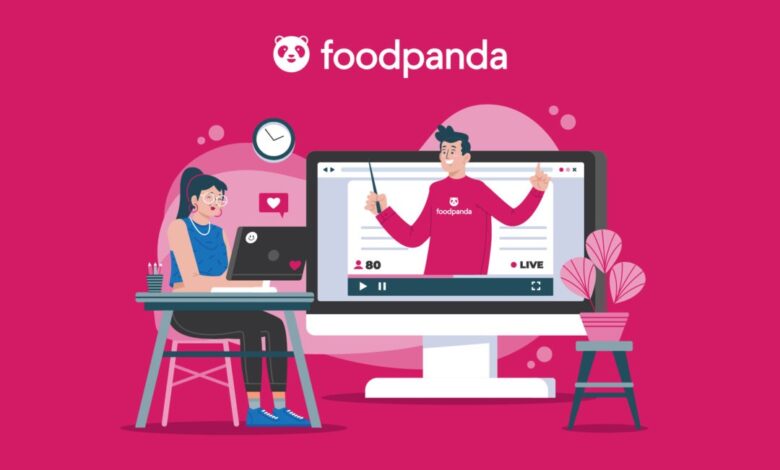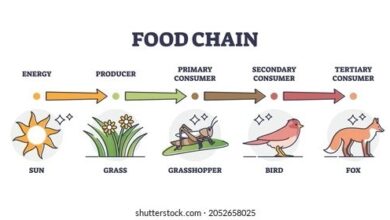Food Panda Craving Satisfaction

As Uber’s business model and on-demand application concept gained acceptance and became well known, Food Panda emerged as an order-on-demand delivery service that quickly became immensely popular in the marketplace. Utilizing innovative technology that delivers food directly from restaurants near customers’ doorsteps. For further insight into its operations and revenue, take a look at the Food Panda Company’s business model.
What is Food Panda?

Food Panda can be described as an online food delivery and ordering platform that connects consumers with restaurants in their area. With user-friendly platforms that make searching menus on various websites simple, ordering delicious dishes for affordable prices becomes possible, and delicious cuisine can be purchased with just the click of a smartphone screen! Foodpanda company models can leave companies feeling confused. There can be various concerns surrounding its operations, such as, for example, what its ways are of generating revenue or any potential benefits it could bring them. Questions remain. Visit this post for a thorough understanding of food delivery and ordering platforms. Most companies utilize apps on demand that enable them to meet customers’ growing expectations more easily. Food apps have long been part of the on-demand economy. Their simple psychological appeal attracts users while providing time and effort savings. The food delivery revenue sector is expected to see considerable expansion, with an eventual market valuation of approximately US$1.02 trillion by 2024. Food Panda and similar apps will play an increasingly vital role in helping us save both effort and time in 2024, offering customers convenience across their touchpoints with their on-demand service. We will gain insight into this vast food industry company to gain a clear view of its revenue model and business strategies.
Success Story Of Food Panda In the Food Business
Food Panda is an international online food delivery platform present in over fifty countries worldwide, including Bulgaria, Asia Pacific, and Romania. Managed by German company Delivery Hero SE with offices based out of Berlin, Foodpanda offers food delivery anywhere in its service areas. Foodpanda provides foodies with an effortless platform for ordering their favourite meals from local eateries across 246 cities worldwide, offering over 15,000 restaurants as partners on its platform. Foodpanda partners with over an estimated 80,000 riders for delivery. Deliver Hero acquired its business in December 2016. In India, Ola acquired Foodpanda operations for between $40 and $50 million on December 29th, 2017. Food Panda sold their Delivery Club division for $100 million to mail.ru in Russia in 2016, while Rocket Internet, their biggest shareholder, sold Foodpanda to German rival Delivery Hero and adopted their logo of pink instead of orange in 2017, respectively. Tech major Delivery Hero promptly followed Foodpanda into rebranding itself, offering exclusive discounts and promotions designed to increase customers using its platform. By 2018, Foodpanda had processed around three lakh orders each day, while this figure rose to over five lakh by 2019 alone. Ola is suspending Foodpanda food delivery service this year and has laid off more than 1500 “food delivery executives.” Food Panda operates under its in-house brands known as cloud kitchens, an idea adopted by Ola when purchasing Holachef in 2018. In 2019, their business will only include three private labels within this sector, such as The Great Khichd Experiment and FLRT. Foodpanda has raised $318 million in venture capital funding over its history. Foodpanda successfully raised an initial round of financing through Rocket Internet, AB Kinnevik, Phenomen Ventures, and MENA Holdings in 2013. That year also marked when Phenomen Ventures made an $8 million investment in Foodpand. That same year, its investors and Phenomen Ventures each invested $20 million, respectively, in an initial round. By 2014, Foodpanda announced they had amassed $60 million across various investor pools by 2015, while Goldman Sachs announced investing $100 million in Foodpanda during a short period! Foodpanda’s founders were Luke Nagel and Rico Wyder, who established it in 2012 in Berlin, Germany, with headquarters nearby. Foodpanda now stands at $6 billion+, while funding comes from Rocket Internet as well as other investors totaling $100 million in capital funding. Statista reports indicate that Food Panda received approximately 8.7 million orders during its inaugural year alone in 2014. By 2015’s end, however, they had managed to process over 22 million.
How Does Food Panda Work?

Food Panda is an exciting platform that facilitates restaurants offering excellent services directly to patrons who would prefer delivery of their meals directly to their homes. Foodpanda makes money through delivery costs while simultaneously cutting its operating costs through different strategies, which include:
- Special discounts may apply when making bulk purchases
- Creating stronger networks to ensure timely food deliveries
- Collecting cash before delivery and advertising fees
- Deliver different kinds of items beyond food delivery
Foodpanda has received much media coverage due to its focus on each of the phrases listed above, especially as on-demand apps have come into focus over recent years. More businesses have decided to invest in service on demand, with plans such as creating their own advanced Food Panda replica application to offer customers effortless food deliveries at all hours. Check out this video of Foodpanda’s process of providing timely deliveries of meals directly to customers’ doors! Food lovers can browse the menus of nearby restaurants as well as their specialty dishes and meals. Customers place orders with them, who in turn give orders directly to restaurants, who then prepare and cook food and prepare delivery service providers accordingly for delivery service providers to deliver it directly. Eventually, it takes over by giving orders directly to delivery service providers, who then distribute orders directly. Our delivery service delivers food directly to our clients’ addresses, while phase 5 paying customers make payments and provide feedback based on their experience with it. Foodbanda provides simple and dependable operation of Foodpanda-esque applications like Foodpanda for those passionate about food or restaurants alike. If your business requires long-term development strategies to thrive, then consider investing in similar apps as a possible way forward. Foodpanda Business Model Canvas For food lovers everywhere, Foodpanda provides an exquisite and flavorful dining experience like no other. Their platform has effectively eliminated the necessity to travel to restaurants since foodies can get it delivered directly to their homes via ordering food online. Food Panda links them directly with nearby restaurant options they prefer and connects customers directly. Learn everything there is to know about what the system does as well as their business model today. Don’t wait; learn it right now. Foodpanda provides customers with delicious, nutritious, and exceptional dining experiences; there is no need to go anywhere for meals anymore, all thanks to an online ordering system connecting eateries directly with nearby restaurants of their preferred choice. Discover everything this system does and its business model within just minutes.
Consumer Groups

Food Panda provides significant value proposition advantages to its platform users: access, convenience, personalisation of branding status as a brand status savings and cost reductions. Foodpanda makes advertising products to those unable to visit an actual physical location simpler while making shopping online simpler for food shops themselves. Customers can place orders using an easy and intuitive system; they can make orders any time of the day via the site without hassle or issues; additionally, they have the choice of picking up or having items delivered right to them; and they can pay using any method suitable to them. The system allows customers to customize the experience by categorizing restaurants according to type. Furthermore, its offers, such as food discounts and free delivery, encourage customer interaction as they try new products while saving costs. Foodpanda has earned itself an exceptional reputation thanks to its rapid business expansion, currently covering around 500 cities in 24 different countries and receiving accolades such as winning the European Tech Startup Award 2014 in “Best E-commerce Startup.” Foodpanda operates with a cost-driven model to maximize sales at its stores while simultaneously decreasing expenditures and expenses, both manually and via automated systems. Primary drivers for expenditure on this website include marketing and sales expenses as well as fixed expenditures such as customer support and administration charges or administrative overhead fees. Foodpanda derives its primary income stream from restaurant commissions it has established through partnerships. According to one report, over 40% of Foodpanda’s revenue comes through delivery, and 10% comes through advertising. There are multiple other avenues through which Foodpanda generates funds; explore for yourself. Digitalization has led to an explosion of food delivery right to our homes, turning dining out into more of an at-home dining experience than ever. Modern-day foodies prefer customised meal delivery services at home, such as Food Panda, that remove the hassles associated with managing and finding delivery companies. Foodpanda turns around $100 into $150 when signing up, and Foodpanda offers businesses an advertising service through which they can market their business through an interactive site such as its platform. Businesses pay monthly advertising fees on Food Panda to take part. Foodpanda charges an applicable delivery charge on each ordered shipment that depends upon its area. Users visiting Foodpanda’s app or website will see payment options like credit or debit cards as well as methods of making payments available via any number of platforms, such as credit, debit, F&I cards, etc., making payments more flexible. Foodpanda charges an affiliate revenue source fee from both banks offering these payment services directly, which provides another avenue of income generation for Foodpanda. Foodpanda promises around 20% commission for orders users place through its platform, saving restaurants time and money by not covering electric bills, rent costs, and other related service-related costs for service delivery, yielding substantial profits for Foodpanda service providers. Food Panda may have experienced various obstacles along its journey as an online delivery platform, yet they have managed to overcome all challenges to remain viable. Their rapid expansion can be traced to customers preferring online services over physical ones; similarly, their platform gives users seamless customer service by offering direct deliveries directly to users’ homes; they also have a large market presence as a large audience subscribes; and additionally, you could create sophisticated delivery platforms within organisations too.



